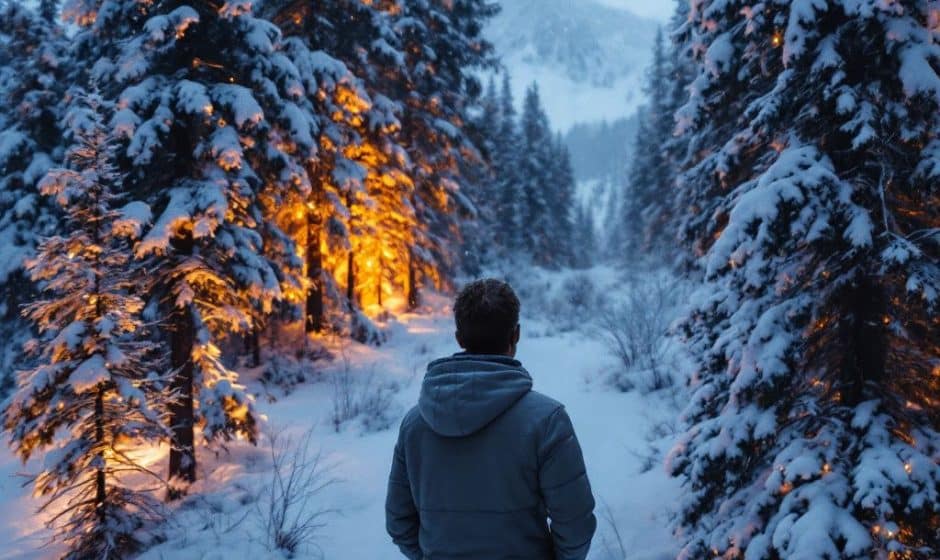Isn’t there something just downright magical about a fresh blanket of snow? The way it muffles the world, wrapping everything in a pristine, sparkling layer makes winter a unique time for soulful reflection and, would you believe, invigorating health practices. If you’re skeptical about the benefits of braving the cold for a snow walk, hang with me for a bit. We’re diving into the icy yet surprisingly warm world of snow walk health, a fascinating domain tied deeply to hormone regulation. Yes, those tiny, mighty messengers that affect everything from your mood to your waistline. So, gear up—we’re about to embark on a journey where cold nature meets health revival.
Why Should You Care About Snow Walk Health?
You might be wondering, **”Why would I step out in the cold when I can stay cozy inside?”**
Good question! The short answer is that cold weather walks, especially against the backdrop of winter’s snowy spectacle, do wonders not just for the soul but for the body too. Simply put, engaging in snow walks is a perfect way to get your hormones back in order without dystopian measures. Hormone regulation through such natural means aids everything from boosting energy levels to tackling seasonal depression and even catalyzing an overall sense of well-being.
But it’s not just about feeling good in a broad, philosophical sense—we’re talking real biochemical changes. During a snow walk, your body is hard at work balancing those fluctuating hormones that might have gone astray.
The Science of Cold Nature and Hormone Regulation

Okay, I can see you’re still curious—let’s break down what actually happens during a snow walk in terms of hormone regulation. The cold environment introduces your body to this energizing practice known as snow therapy, where exposure to cool temperatures trains your system to become more efficient and adaptable. This is a fun little dance involving cortisol, serotonin, and melatonin—don’t worry, it’s less complicated than it sounds.
Cortisol: The Energy Driver
In simpler terms, that rush you get from the brisk chill snipping at your cheeks isn’t just your imagination. It’s your body gearing up, cortisol levels moderating to give you a steady supply of energy throughout the day. Too high or too low, and you’re a mess. Snow walks help regulate this.
Serotonin: The Mood Lifter
Let’s not forget serotonin, your mood’s best friend. Exposure to natural light during a winter walk—even when cloudy—boosts serotonin. High dopamine? Hello, happiness! Essentially, your snow walk is a flashlight in the proverbial darkness of winter blues, making snow therapy a surprisingly joyful pursuit.
Melatonin: Sleep’s Best Ally
What’s more, the regulation of serotonin helps balance your circadian rhythm, finally anchoring us at melatonin. Have you been tossing and turning all night? A scalding cup of bedtime tea isn’t the only answer. Snow walking helps balance melatonin, priming you for restful sleep once you’re back in your toasty fortress.
Spice Up Your Snow Walk

Feeling pumped yet? These snow walks aren’t just basic strolls. They are explorations—you’re a winter wanderer charting an icy, hormone-regulating course:
- Layer Smart: Who said regulating your body’s internal thermostat needs to be burdensome? Lightweight layers with breathable fabrics let you move freely— just make sure they’re good insulators!
- Mindfulness in the Frost: Pay attention to each step. The crunching sound of snow, the sharp air, the serene silence—let it all soak in. Mindful walking isn’t just meditative; it’s also a direct line to stress relief.
- Short and Sweet: Especially for beginners, don’t overdo it. Ten to twenty minutes of dedicated snow walking yields ample hormone benefits without pushing your limits too far.
- Salt of the Earth: Consider configurating part of your route through areas that have trees. The energy in snow-covered forests is unparalleled and has its own restorative properties.
- 5. **Sled Rex—King of Hills: Got a bit adventurous spirit in you? Try adding a sledding break to your walks! It’s fun, it’s a workout, plus elevations change up the hormonal response—giving cortisol that creative jolt!
Challenges and How to Navigate Them

Life’s not all roses and powder-soft snow, right? Keeping it real about challenges is key. The primary hurdle on snow walks is staying motivated. Nobody wants to be blindsided halfway on a walk, especially in wintry depths. Here are some solutions we casually crafted—stuff I’ve found works:
- Buddy System: In need of company or accountability? Rope in a friend; it multiplies joy and halves potential loneliness.
- Trail Tracking—Tracks of Life: Use a tracker or fitness app to monitor progression and inject a sense of accomplishment. It becomes a thing you excitedly anticipate!
- Cheat, Don’t Defeat: Music podcasts, soothing tunes, low-key snappy audio stories—whatever jostles your curiosity or lays your mind to interactive rest, those are equally phenomenal aids.
Say Hi to Our Snowy Fellow Walkers
Building a community of like-minded individuals helps make this practice stick. Look out for local groups online: hikers, nature lovers, snow enthusiasts gathering fraternally for collective walks. It’s bang-on fun making new pals, exploring newer pathways while engaging in meaningful health-boosting exercise.
Winter doesn’t have to mean gritting your teeth as you bear down the days until flowers blossom again. With these purposeful snow walks, navigating back streets, pleasant meadows, or forest paths, you’re doing way more than just a physical workout. It’s a deliberate way of realigning hormone regulation—plugging straight into the incredible circuit of natural wellness engineered by centuries of natural evolution.
So, are you ready? Give it a try—trust me, as you ease into this snowy groove, not only will nature’s stunning white blanket reveal unseen beauty, but so too will you unfurl emerging personal wellness. Double up connection and warmth during this cold season and watch both your mood and body sing in harmony.
Frequently Asked Questions
What causes a hormonal imbalance?
A hormonal imbalance can be caused by natural changes or stages in your life, including puberty, pregnancy, perimenopause, and menopause. Other causes include partial or full hysterectomy, tumors, adenomas, and autoimmune diseases that affect the endocrine glands[3][5].
How does hormone replacement therapy (HRT) work for hormone regulation?
Hormone replacement therapy works by topping up or replacing the missing hormones in the body. During perimenopause and menopause, levels of oestradiol, progesterone, and sometimes testosterone decline. HRT involves prescribing these hormones, often in the form of patches, gels, sprays, or pills, to improve symptoms and future health outcomes[1][3].
What are the common symptoms of a hormonal imbalance?
Common symptoms include irritability and fatigue, mood swings and depression, skin dryness and loss of elasticity, water retention and weight gain, osteoporosis and joint pain, less interest in sex, insomnia, and other sleep disorders, as well as memory issues and difficulty concentrating[3][5].
What are the different types of hormone replacement therapy available?
Hormone replacement therapy comes in various forms, including systemic hormone therapy (pills, patches, rings, gels, creams, or sprays), low-dose vaginal products (creams, tablets, or rings), and bio-identical hormone replacement therapy, which is structurally identical to human hormones and may have fewer side effects[1][3].
References




